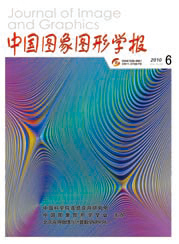
基于对象的遥感案例推理方法检测岩溶地面塌陷
窦 杰1,2, 钱峻屏2,3, 陈水森2, 郑小战4, 刘瑞华2, 朱俊凤3, 夏 换1(1.中国科学院广州地球化学研究所, 广州 510640;2. 广州地理研究所广东省遥感与GIS重点实验室, 广州 510070;3. 中山大学地理科学与规划学院, 广州 510275;4. 广州地质调查院, 广州 510503) 摘 要
岩溶地面塌陷是一种典型的城市地质灾害,岩溶地面塌陷的检测在城市防灾减灾中具有重要的意义。目前常用的塌陷检测多基于野外调查或者遥感目视解译,检测效率低。采用人工智能方法对遥感影像中的岩溶地面塌陷检测及分类的研究值得尝试。采用0.2m分辨率的高分辨率航空影像,以多尺度分割后的影像对象为基本单元,提取影像对象的特征属性。在利用遗传算法对检测因子进行优化后,在Matlab平台下建立案例推理(CBR)程序,实现基于影像对象的塌陷识别与分类。最后结合ArcGIS软件完成对岩溶地面塌陷的快速检测结果的精度评价和方法的适宜性分析。研究结果发现,案例推理方法适合于高分辨率影像中的岩溶地面塌陷快速自动检测。利用野外调查数据对自动检测结果的精度验证表明,对成熟岩溶地面塌陷的检测精度达到88.9%,总精度为88.1%,卡帕系数为79.1%;利用同一方法和案例库对不同试验区的岩溶地面塌陷检测结果进行了对比检测,总精度为82.2%,表明该方法和案例库有很好的可重用性。对比CBR方法和传统监督分类方法发现,基于对象的监督分类方法检测精度(总分类精度是68%,卡帕系数只有47.9%)仍低于CBR方法,说明CBR方法更适合于解决复杂环境下的分类及检测伪命题。提出的案例推理方法检测速度快、精度较高,是实现岩溶地面塌陷自动检测的一种有效手段。
关键词
Object-based and Case-based Reasoning Method for Ground Collapses Detection
DOU Jie1,2, QIAN Junping2,3, CHEN Shuisen2, ZHENG Xiaozhan4, LIU Ruihua2, ZHU Junfeng2, XIA Huan1(1. Guangzhou Institute of Geochemistry, Chinese Academy of Sciences, Guangzhou 510640;2. Key Laboratory of GIS and Remote Sensing of Guangdong Province, Guangzhou Institute of Geography, Guangzhou 510070;3. School of Geography and Planning, SunYet-Sen Un;4.Guangzhou Institute of Geographical Survey , Guangzhou 510070) Abstract
Ground collapse was a typical geological disaster in karstic area. Comparing to other geological disaster, ground collapses were considerably small in scale and dispersive in distribution. This made detecting and identification of ground collapse in urban areas quite a challenging work. In this paper, an object-based image analysis method was used to detect the ground collapse sites using remote sensing images. Firstly, multi-scale image segmentation was performed on the 0.2 meter aerial image of study area and over tens of spatial, spectral, shape and texture features were extracted based on the segmented image objects. Then eight optimized features for ground collapse classification was selected using generic algorithm(GA), which obtains the best fitness value in ground collapse classification. After that, some on the spot ground collapses were used as cases sites and cased-based-reasoning(CBR) classification was applied on all the segmented image objects, from large scale to small scale. In the end, classification accuracy was evaluated over the whole study area. The overall object-based CBR classification of ground collapse area is about 0.881 and the kappa coefficient is 0.791. Higher accuracy(0.889) is achieved for the ripe ground collapses detection. The same case library was also applied to another trial area for reusability testing and achieved satisfactory results. In conclusion, CBR method could be successfully applied to ground collapses detection using high resolution images. CBR method proposed in this paper could achieve betters classification accuracy than traditional supervised classification methods.
Keywords
|



 中国图象图形学报 │ 京ICP备05080539号-4 │ 本系统由
中国图象图形学报 │ 京ICP备05080539号-4 │ 本系统由